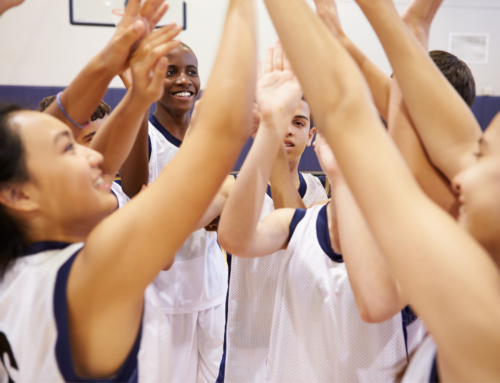And why it’s important…
The old adage says “The early bird gets the worm.” And just about every recruiting article on CaptainU also reminds you to “start your recruiting early.” However, in most cases, coaches can’t contact you before the start of your junior year in high school, nor can you make official visits before then. So what do you have to gain by starting earlier than that? Plenty!
When Is The Best Time To Begin My Recruiting?
In most cases, you can begin your recruiting as early as your freshman year in high school. For elite talent, it’s not unusual to already see coaches at their games in their freshman season, and some have received verbal scholarship offers as early as their 8th-grade year. But for the other 99.9% of high school student-athletes, starting your recruiting in your freshman year simply entails doing your research and getting prepared for (hopefully) bigger things to come.
How Do I Start My Recruiting Early?
Consider what you want from your college experience and start thinking about what schools you might be interested in. Assemble a target list of 15-20 schools and give them more thought. Aim for a mix of safety schools, locks, and dream destinations. Think about what you might want to major in and make sure each school offers that course of study.
Go to each school’s athletic department website and, if it’s available, fill out and return the recruit questionnaire. Doing so doesn’t commit you to any college or university. Instead, It merely expresses your interest as a student-athlete in that school and it’s the first step to getting on a coach’s recruiting radar. Further, your initial college list isn’t etched in stone and it’s actually good advice to add and subtract schools from that list as you refine what you’re looking for.
Your freshman year is also time to think ahead about how coaches see you. That includes assembling a recruiting profile that tells a little bit about you, your athletic background, your current school and position, and features your experience and contact info. In addition, start working toward assembling a highlight or skills video. It doesn’t have to be a career retrospective and, instead, should be roughly three to five minutes of video that puts the spotlight on your abilities and skills. Remember that, like your target school list, you should update your profile and highlight video as you go.
The next step to starting your recruiting is to consider your social media accounts. If you currently have Facebook, Twitter, Instagram, or other social media accounts, review everything you’ve ever posted and delete anything that anyone might consider the least bit offensive. Even if your account is private, anything you’ve posted is immediately public and out of your control should one of your followers choose to share it with a wider audience. From this point forward, focus any social media content, in either existing or new accounts, on the positive while promoting your athletic and academic abilities.
The last step in getting an early start to your recruiting is to familiarize yourself with the recruiting calendar for your sport. (If you’re a multi-sport athlete, you don’t have to make a decision yet, but make sure to know the calendars for all the sports you play.). In addition, be familiar with the NCAA recruiting rules. While they may be different for each sport or division, understanding how, when, and how often coaches are allowed to contact you is important. You can reach out to a coach at any time. And sending coaches your recruiting profile, highlight video, and a note explaining your interest in their school is encouraged. Just remember that the NCAA regulates when and how coaches are allowed to reply or initiate contact with you.
When Does My Recruiting Officially Begin?
Though you’re considered a recruit once you begin your freshman year of high school, “recruiting” is considered to begin right after your sophomore year or just before your junior year, depending on the sport. That’s when coaches are allowed to initiate contact with recruits and you can be hosted for official visits. Everything you’ve done early in your freshman and sophomore seasons will prepare you to hit the ground running when you can actually be directly recruited.
If you’re not generating much interest from coaches at your target schools by your junior year, take an honest assessment of where you stand (ask your coach for help if needed) and narrow down and adjust your target list accordingly. Hopefully, you’ll be hearing from coaches and, with an idea of what you’re looking for from all the prep work you put in earlier, should begin to pay off
You should also remember that, as you grow and continue to improve your game, schools you may never have considered could also make recruiting overtures toward you. Give those schools the same consideration you gave programs on your initial target list. Don’t close any doors and keep all your options open.
Don’t Overlook Your Academics
Another important element of making yourself a more attractive recruit is your academic standing. Starting early to ensure that you’re on course to meet the NCAA’s academic eligibility requirements will make things a lot easier as your recruiting heats up. Showing coaches that you’ll qualify academically and can carry the academic load in college will make you more recruitable. And if your grades are a concern, the earlier you start working to improve them will create fewer questions for coaches later.
By understanding the timeline and process earlier, you can be better prepared for when your recruiting heats up later. And as you enter your junior and senior years, the work you’ve put in earlier will pay off, as you’ll be better prepared, stressing less, and have a clearer picture of how to find the school and athletic program that fits you best.
Did you enjoy the article ‘What It Means To Start Your Recruiting Early’? If so, check out more of our articles HERE.



